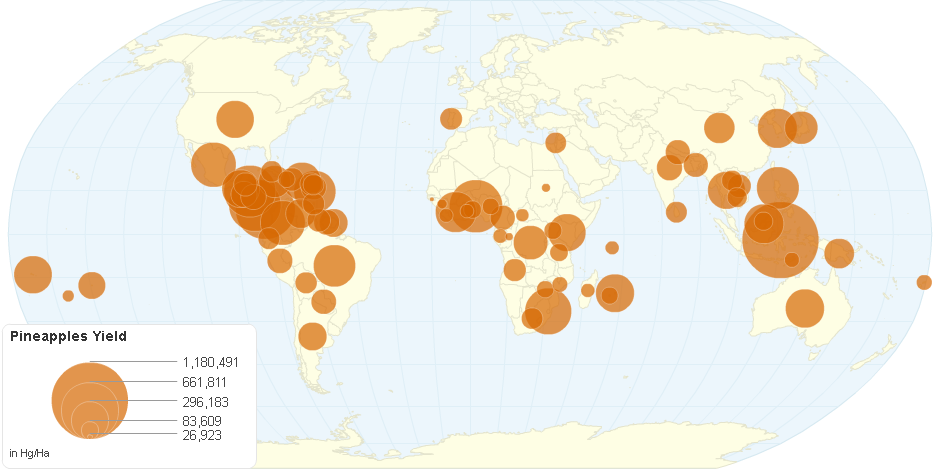This chart shows Pineapples Yield by Country.
The pineapple is a tropical plant with edible multiple fruit consisting of coalesced berries, also called pineapples, and the most economically significant plant in the Bromeliaceae family.Pineapples may be cultivated from a crown cutting of the fruit,possibly flowering in 20–24 months and fruiting in the following six months.
Pineapples do not ripen significantly after harvest. Pineapples can be consumed fresh, cooked, juiced, or preserved. They are found in a wide array of cuisines. In addition to consumption, the pineapple leaves are used to produce the textile fiber piña in the Philippines, commonly used as the material for the men's barong Tagalog and women's baro't saya formal wear in the country. The fiber is also used as a component for wallpaper and other furnishings.
The pineapple is a herbaceous perennial, which grows to 1.0 to 1.5 m tall, although sometimes it can be taller. In appearance, the plant has a short, stocky stem with tough, waxy leaves. When creating its fruit, it usually produces up to 200 flowers, although some large-fruited cultivars can exceed this. Once it flowers, the individual fruits of the flowers join together to create what is commonly referred to as a pineapple.
Seed formation needs pollination, but the presence of seeds harms the quality of the fruit. In Hawaii, where pineapple is cultivated on an agricultural scale, importation of hummingbirds is prohibited for this reason.Certain bat-pollinated wild pineapples open their flowers only at night.
In a 100-gram serving, raw pineapple is an excellent source of manganese and vitamin C , but otherwise contains no essential nutrients in significant content.
9 years ago

